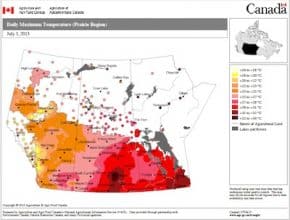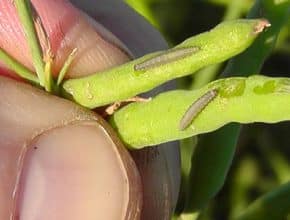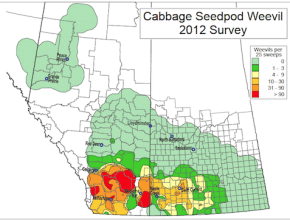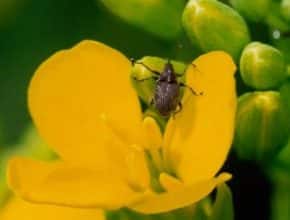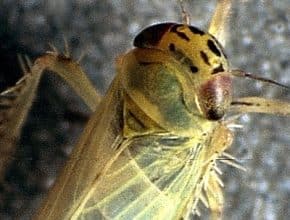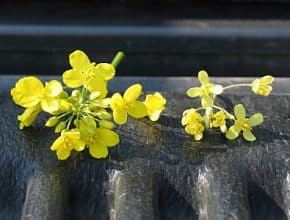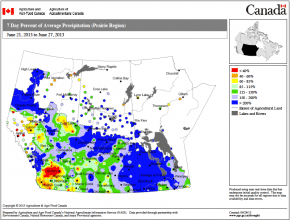It’s looking like a hot week across the Prairies. The map above shows the highs for July 3, with many regions with highs of 30C+. (Click on the map for a bigger version.) Canola doesn’t like heat, especially at flowering. Heat can cause bud and flower blasting, resulting in blank pods and lower yield. But heat isn’t the only possible…
July 4, 2013 - Issue 14
-
-
-
Moisture has a much larger influence than temperature when it comes to sclerotinia risk. Infection can be high in hot weather as long as the moisture is there. Moisture can come from rain, relative humidity in the high 80s, or morning dew. Dew and high humidity can provide enough moisture for sclerotinia stem rot. If your pants get wet walking…
-
-
-
Many canola fields have a combination of insects feeding on the crop. An “additive” effect is possible when more than one species are feeding on key yield-producing areas — flowers, buds or pods — at the same time. For example, lygus and cabbage seedpod weevil have been found in the same fields in the southern Prairies this week. Preliminary results…
-
-
The ideal time for a sulphur top up is any time before flowering, but a top up at early flowering may pay off if plants are showing signs of sulphur deficiency. The ideal time for a nitrogen top up is before the 5-leaf stage of canola, but AAFC research out of Indian Head, Saskatchewan, shows that nitrogen top dress as…
-

